Keating with Love!
Caution! We do not provide turn-by-turn directions in our GPX files. Those are auto-generated by your bike computer and are usually less than 70% accurate. Learn more.
For help loading a GPX file onto your bike computer, go here.
DownloadHighlights & Remarkable Spots
Keating / ~ Mile 3

Keating and the Keating Valley are home to productive farms and ranches today. The “town” is named for “Uncle Tom” Keating, a former British sailor and early settler and investor in land. A post office opened December 1880 and remained active until January 1975.
In rural ranch and farming country please give way to trucks, tractors, and combines. That may mean stopping as a group and letting a large combine pass, or it may be as simple as riding in a tight single-file line when an oncoming truck with trailing is approaching. Give a listen to our podcast with a local rancher who talks about the challenges cyclists create for them and how we can be better visitors.
Wallowa Mountains / ~ Mile 6
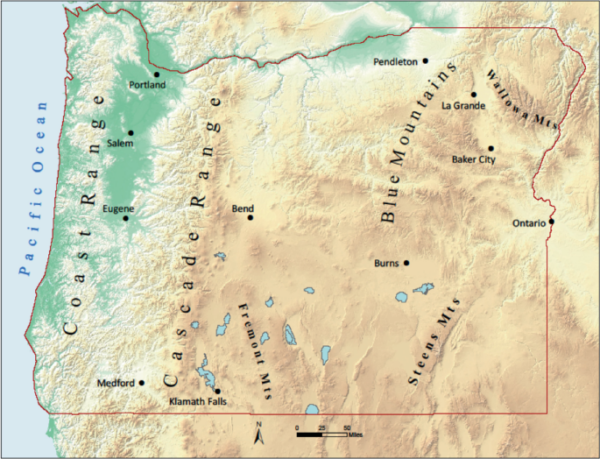
The Wallowa Mountains (looking to the northeast) are known as the “Alps of Oregon”. They are composed of metamorphic rock and granitic rocks of the Wallowa Batholith. The Batholith formed when huge blobs of magma were injected into the rocks of the exotic terranes about 130 million years ago. Because the magma was injected many miles below the surface, the molten rock cooled slowly, allowing the characteristic coarse salt and pepper crystal texture of granite to form. However, the hills around the valleys surrounding the high-Wallowas are made up of Columbia River Basalt. Learn more in our podcast with geologist Dr. Kim Ely.
Powder River / ~ Mile 12
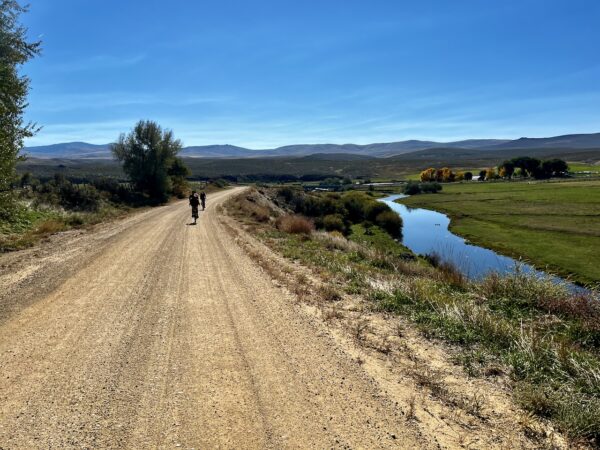
The Powder River was once an important spawning stream for Chinook salmon and steelhead trout coming from the Pacific Ocean. Chinook salmon once migrated by the thousands to spawn in the Powder River and many of its tributaries, but that stopped when the Thief Valley Dam was built near North Powder (20 miles north of Baker City) in 1931. The building of two later dams in Hells Canyon on the Snake River – Hells Canyon Dam (1967) and Brownlee Dam also permanently block salmon passage.
Widman Hunting Preserve / ~ Mile 18.5
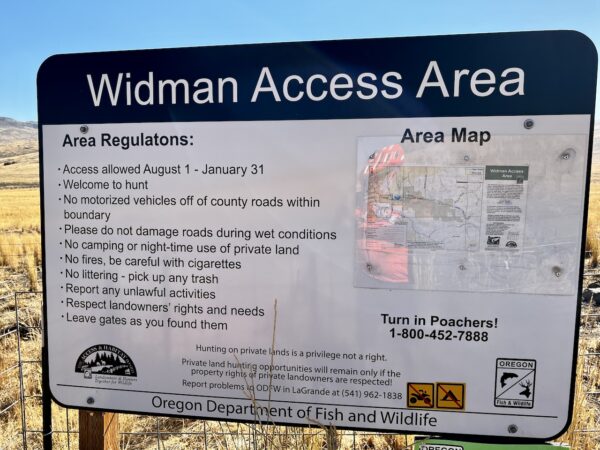
The Widman Access Area is a cooperative program between a private landowner and the Oregon Department of Fish & Wildlife. The goal is to maintain public hunting access on private lands and increase access to public land. The lands provide habitat for deer, elk, pronghorn antelope, Hungarian partridge, chukar, and quail. The ranch has also been active in habitat improvement projects aimed at treating invasive annual grass and re-establishing perennial grass. [on-site kiosk]
Love Reservoir / ~ Mile 21
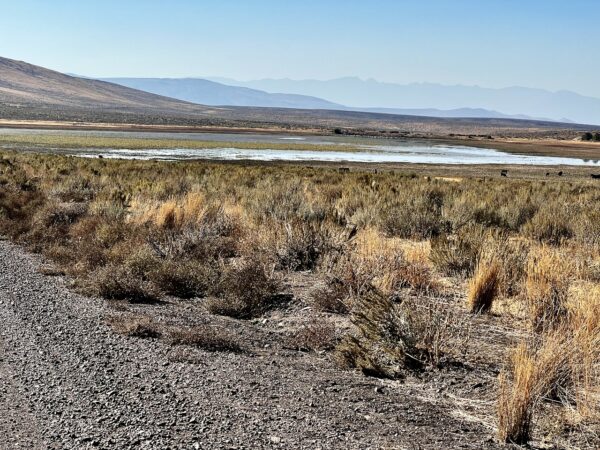
Walter S. Love’s sons homesteaded land between Kelley Creek and Ritter Creek. He built the Love Reservoir around 1900 to furnish irrigation water for this land. This reservoir was fed by ditches that brought water from Love, and Ritter Creeks. When full, it covered 120 acres, but now with the higher dam, it covers 160 acres. [Baker County Oregon Geneology and History]
Elkhorn Mountains / ~ Mile 20
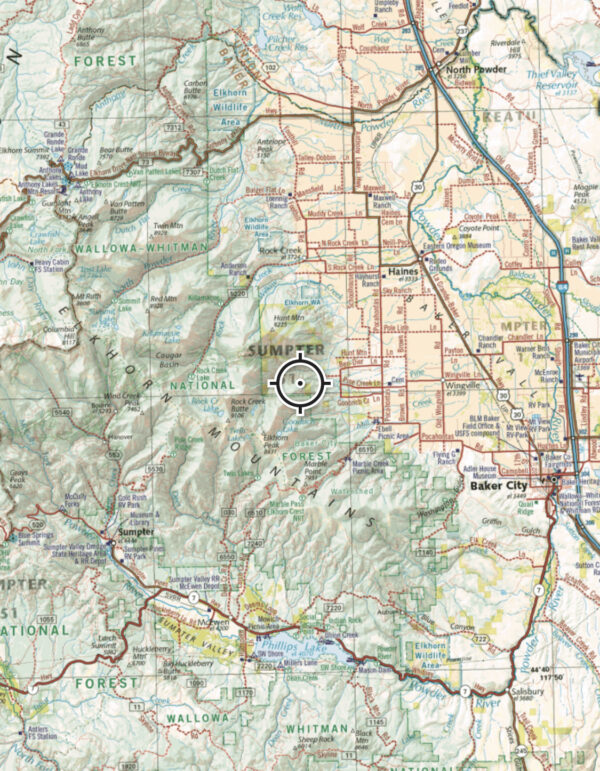
The Elkhorns (looking to the west) are best known for their deposits of gold and the subsequent gold rushes of the late 1800s and early 1900s. Millions of dollars were extracted in towns like Granite, Sumpter, and Auburn.
Like the Wallowa Mountains to the east, they are a geologically complex mountain set with extensive volcanic activity. There are granitic outcroppings that are a testament to magma chambers that cooled and solidified below the Earth’s surface, with wind and water stripping away the overlying rock layers exposing these granite formations. There is also evidence of glacial sculpting from the ice ages that carved out valleys, cirques, and lakes. [Travel Oregon]
Ruckles Creek / ~ Miles 27 to 29
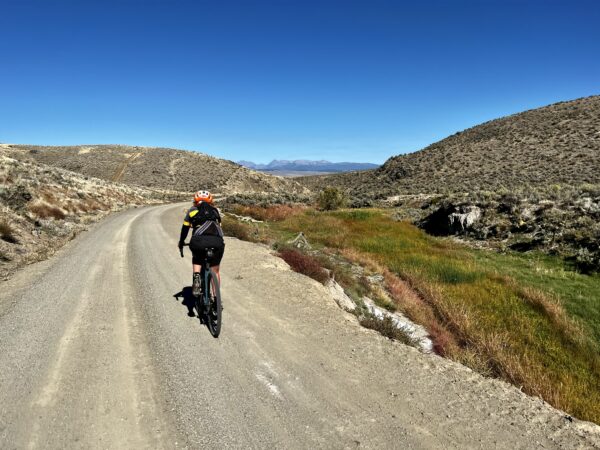
Unknown to most historians, in 1870 there was an attempt to alter the course of the Oregon Trail by leaving the traditional route near Durkee and cutting across the hills to the Lower Powder River valley via Ruckles Creek, past Keating and thence to Pondosa and Telocaset. This plan was doomed from the start because the regular route of 28 years was to firmly entrenched by then. [Oregon Genealogy & History ]
When We Like to Ride This
Spring and Fall, when temps are more moderate. Very exposed. When windy and hot, no go! If you do this in the summer pick a “cooler” day or get an early start. In the spring and fall, the afternoon light is just gorgeous.
Terrain & Riding
The roads. A mix of maintained gravel county roads (with a little pavement) and dirt BLM roads. The terrain. Farm and ranch lands. Rolling hills. Valleys and distant mountain ranges. Grasslands and sage.
Sector 1 / Keating / Miles 0 to 13
This is what we call the north loop. From the highway to Keating back to the highway. Rolling hills through farming and ranch country.
Sector 2 / Widman Ranch & Love Reservoir / Miles 13 to 24
Rugged, exposed (the most demanding terrain of the day). Views that go on for miles and miles. With the longest climb of the day (4 miles, 900 feet, average gradient of ~ 4%). Expect some loose river rock and river rock cobblestone.
Sector 3 / The Downhill / Dry Creek & Ruckles Creek / Miles 24 to 30 (Finish)
6 miles of downhill with an average gradient of 2%, hard-packed, double lane road, some washboard. Hunt for a smooth line. Rolling hills, grasslands, Ruckles Creek and a small canyon. Super scenic!
The Start
ODOT winter-time gravel staging area. Just on north side of Highway 86. No services.
Food & Water
- None
Route Notes
Please ride with respect! Portions of this ride are through rural working ranch and farming country. Please give way to trucks, tractors, and combines. That may mean stopping as a group and letting a large combine pass, or it may be as simple as riding in a tight single file line when an oncoming truck with trailing is approaching. To help alert you to traffic from behind, we recommend a rear-looking radar detector like a Garmin Varia. Also, give a listen to our podcast with a local rancher who talks about the challenges cyclists create for them and how we can be better visitors.
Route Options
There are two longer options.
The first, Keating with Love & Virtue, starts at the Oregon Interpretive Trail Center; it adds a stick to the loop to make a lollipop course (46 miles and 2700 feet of gain). This option is fully documented.
The second is the “Rough & Rowdy (GPX File)” version of Keating with Love & Virtue. It tackles a segment of dirt road that is more primitive and demanding, starting at mile 25 of the Love & Virtue option (58 miles and 4000 feet of gain). Go prepared!

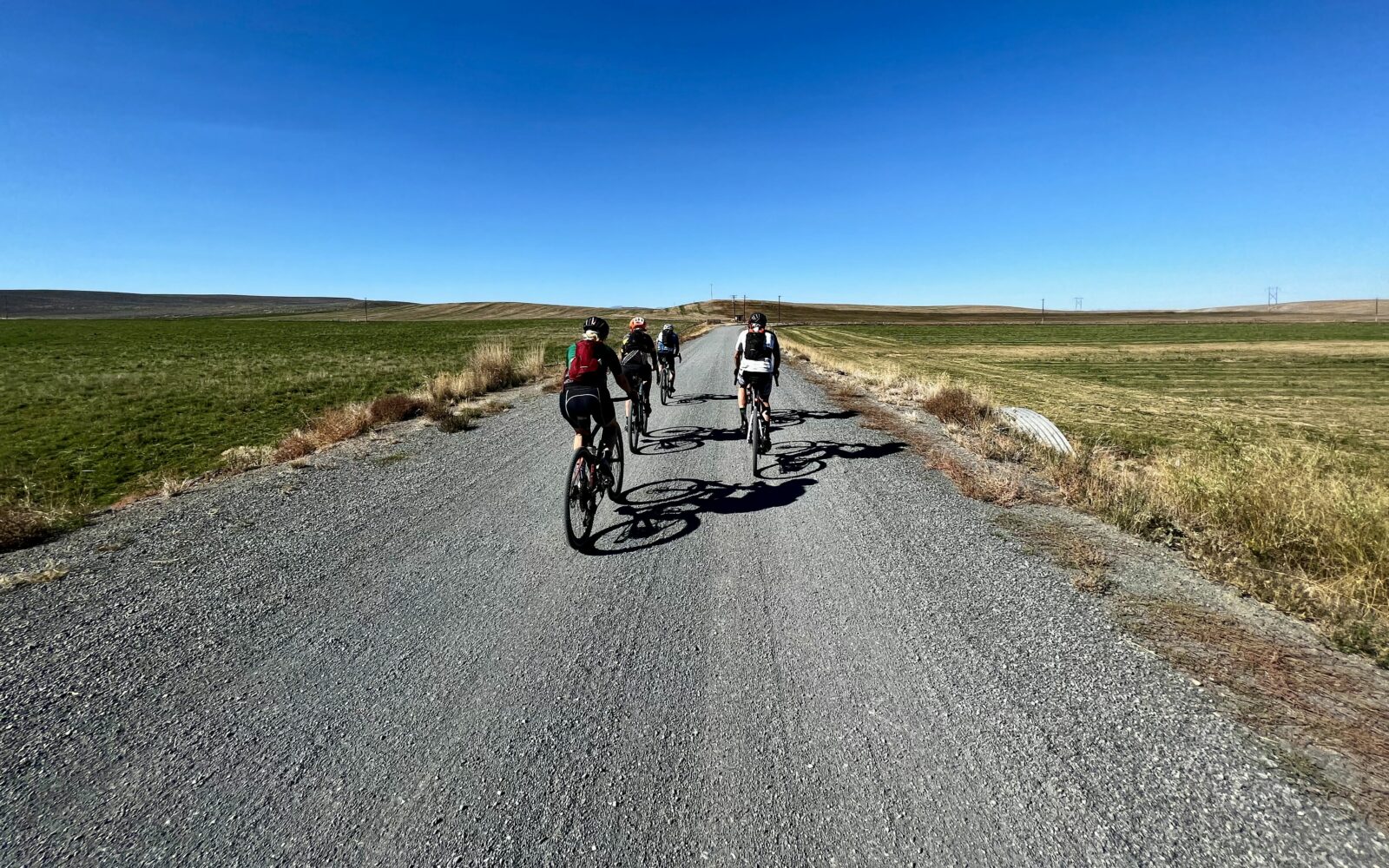
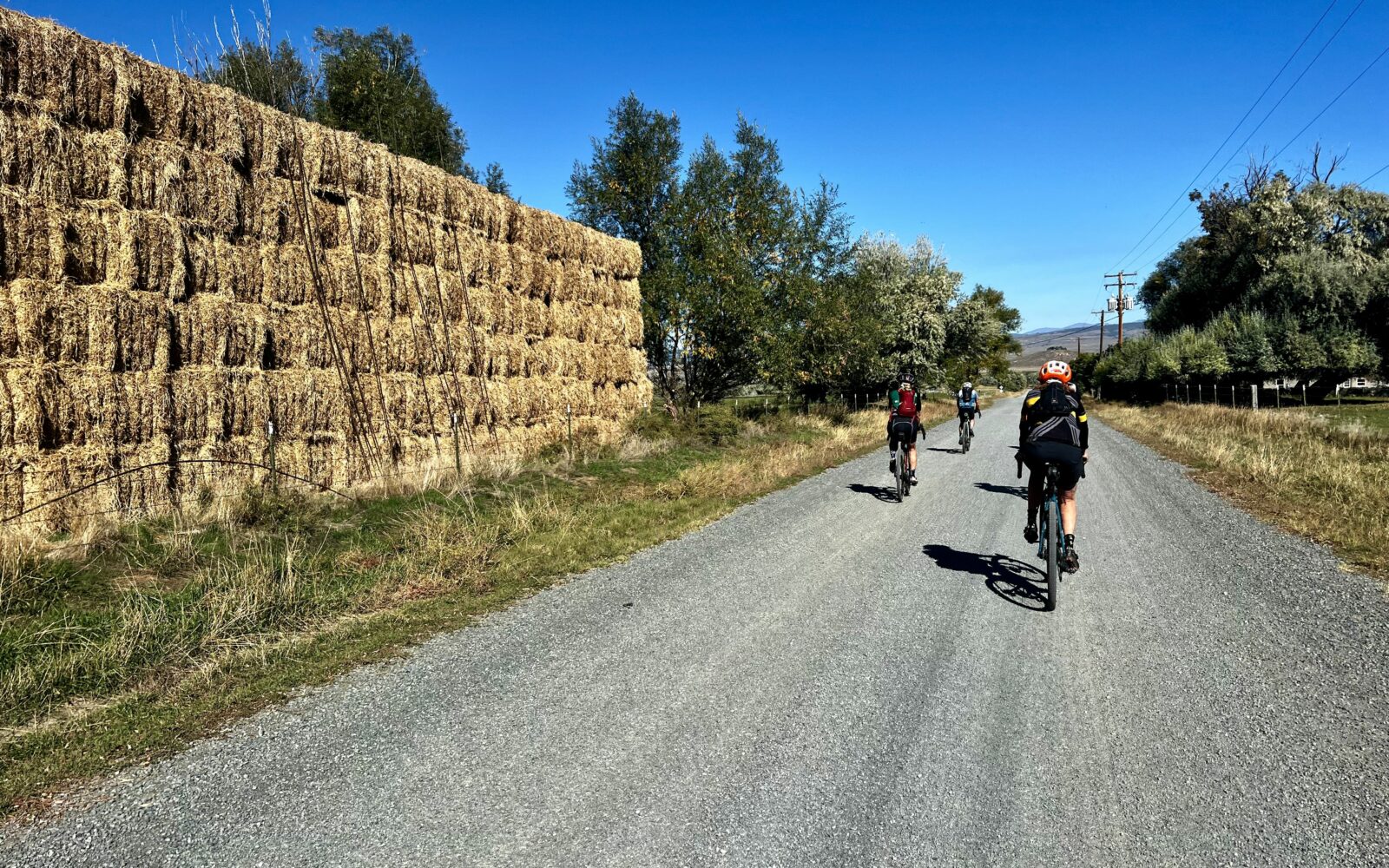






















 If you have any feel for history whatsoever, the
If you have any feel for history whatsoever, the 
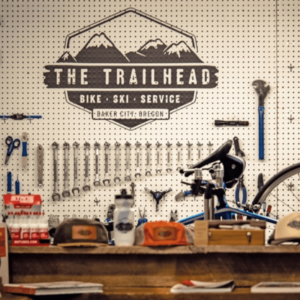
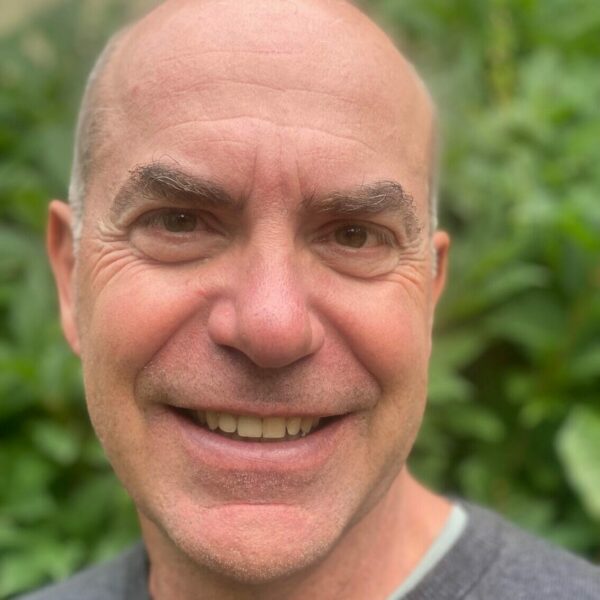

 Behind every route is scouting, mapping, storytelling, and a whole lot of pedal power.
Behind every route is scouting, mapping, storytelling, and a whole lot of pedal power.
Have you ridden this route? Got a question? Join the discussion!